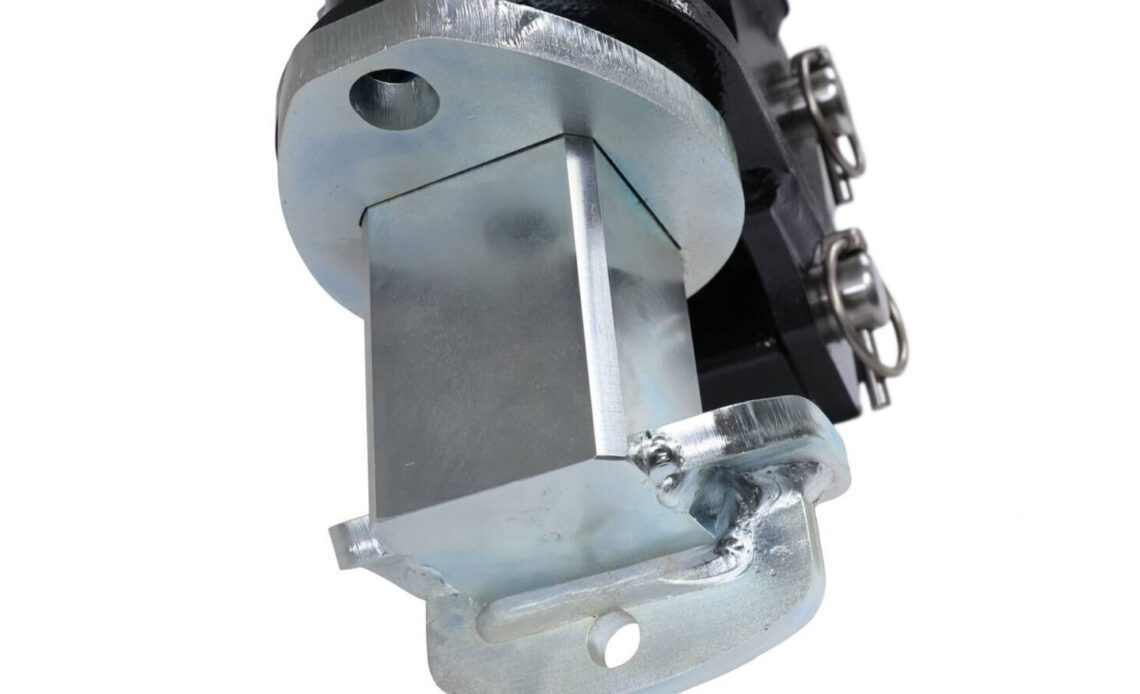If you are a frequent reader of DieselArmy.com, then you remember back in November of 2022, we introduced you guys to B&W Hitch’s new Continuum hitch. You can check out that article here. Anyway, that article took off and you guys really wanted to know more about how this new weight distribution hitch (WDH) was about to revolutionize trailer towing. I announced that I would try to test one, and I recently got the opportunity to do just that.
First, a little refresher about this hitch and its design. The Continuum hitch is rated for trailers with a maximum weight under 16,001 pounds. It is also designed for trailers with a tongue weight between 600 and 1,600 pounds and a 2-inch-wide A-frame coupler design with rails from 4 to 7 inches tall.
The heart of Continuum is the composite assembly (left). The front (middle two images) slides into the receiver and latches with a pin. The rear portion (right) connects to a hydraulic cylinder and has adjustable pin locations.
Next, the area behind the coupler and between the frame rails must be open with at least 2 inches of open area in front of the next object, such as the propane tank tray. The mounting location behind the coupler requires the distance between the frame rails to be between 6 and 9 inches. A clear span of frame rail is needed on the driver’s side frame rail to mount the hydraulic pump. Finally, the Continuum hitch works with hitch receivers of 2 and 2-1/2 inches.
The Weight Distribution Hitch Gets A New Design
How the Continuum Hitch varies from other WDH designs is readily apparent. Instead of steel bars that are “loaded” when being used, Continuum uses composite “springs” that are loaded by a hydraulic cylinder.
The lower portion of the Continuum receiver has a pivoting head that accepts and retains the front of the spring assembly. This pivot point allows complete movement of the weight distribution hitch without binding. A great selling point to this hitch is there is no need to unhook your trailer to back up like needed with other hitches with sway control.
“Our Continuum weight distribution hitch has been in development for nearly seven years,” says Eric Stewart of B&W. “While designing this hitch, we did not want to simply make a hitch that you normally see. We wanted a hitch that is different, easy to use, and allows you to make adjustments on the fly.”
As Stewart mentioned, the Continuum definitely looks…
Click Here to Read the Full Original Article at DragzineDragzine…

